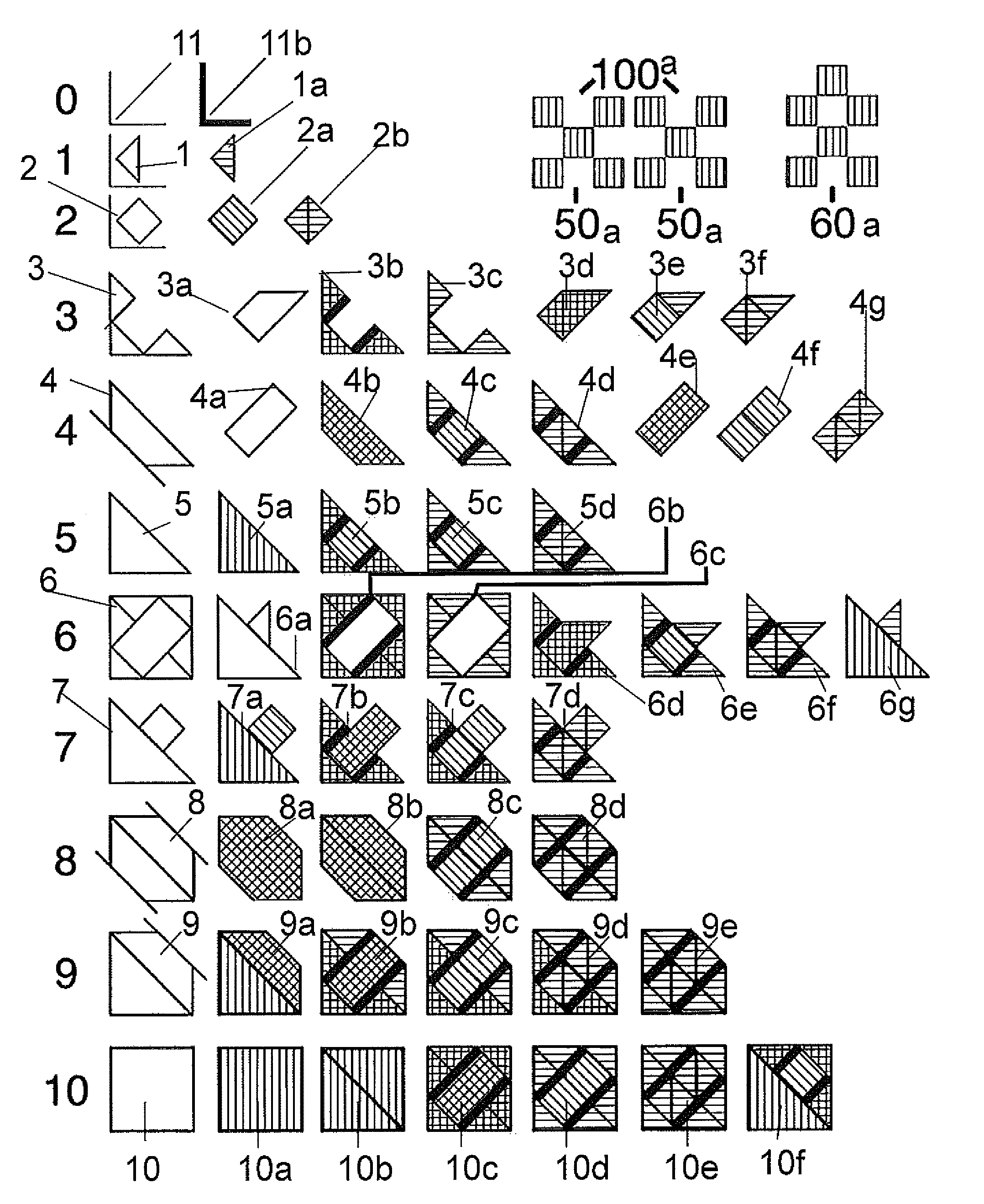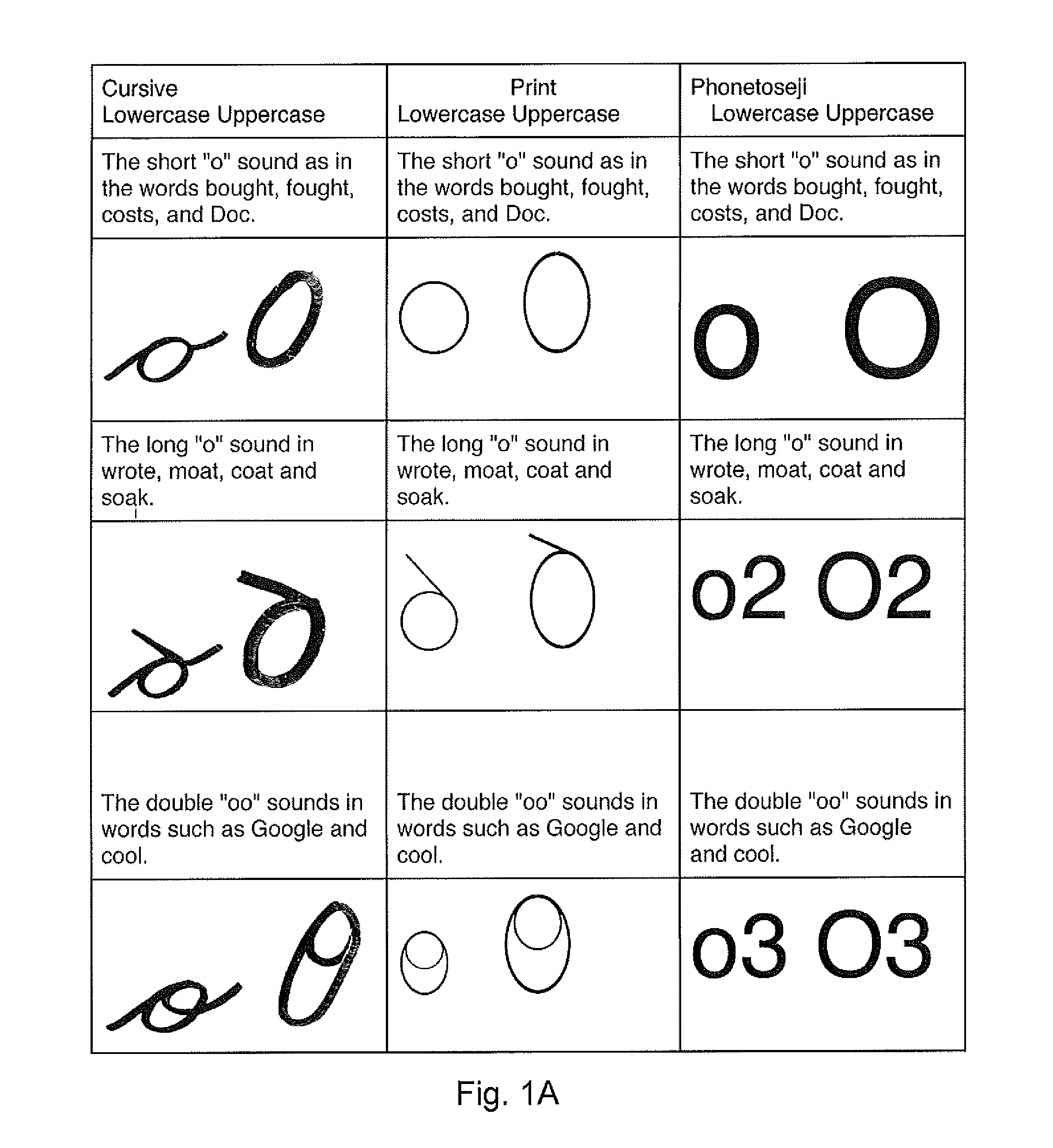Methods and apparatus for teaching reading and math skills to individuals with dyslexia, dyscalculia, and other neurological impairments
- Summary
- Abstract
- Description
- Claims
- Application Information
AI Technical Summary
Problems solved by technology
Method used
Image
Examples
Embodiment Construction
[0073]The present invention includes a phonetic alphabet with clarifiers and modifiers and mathematical symbols and methods of teaching and using same. The phonetic alphabet and method of teaching and use is referred to herein as PHONETOSE™. The mathematical symbols and method of use is referred to herein as SHAPE MATH™. The present invention discloses examples of color schemes associated with numbers or symbols or blocks or geometry shapes. There examples are for illustrative purposes and are not meant to limit the invention.
[0074]Phonetose™
[0075]PHONETOSE™ or “Fa3nedo2s” is a one-to-one phonemic correspondence alternative written orthography for English that is used as a tool to help dyslexic phonemic awareness and used for many of the other inventions as a reference tool. The principal design is to help dyslexics learn to read by allowing them to learn each sound in English without the confusion of digraphs trigraphs and diphthongs. PHONETOSE™ is designed to avoid many of the pro...
PUM
 Login to View More
Login to View More Abstract
Description
Claims
Application Information
 Login to View More
Login to View More - R&D
- Intellectual Property
- Life Sciences
- Materials
- Tech Scout
- Unparalleled Data Quality
- Higher Quality Content
- 60% Fewer Hallucinations
Browse by: Latest US Patents, China's latest patents, Technical Efficacy Thesaurus, Application Domain, Technology Topic, Popular Technical Reports.
© 2025 PatSnap. All rights reserved.Legal|Privacy policy|Modern Slavery Act Transparency Statement|Sitemap|About US| Contact US: help@patsnap.com



